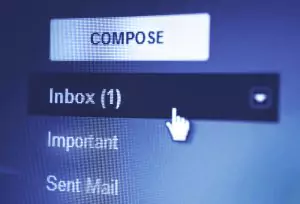Download Corporate Calendar 2026 Download

 4 minutes
4 minutes
Email is one of the most commonly used tools for communication in the business world. Learning how to write an email can help you communicate more effectively and get the desired results.
Every email should have a subject line that succinctly describes the purpose of the email. The body of the email should be concise and clear. If you want to include more than one recipient, use the BCC line.
When ready to send your email, open your program and enter the recipient’s address in the To: field. Write your subject line in the Subject: field. In the body of your email, include a salutation and then state your purpose for writing. Be sure to proofread your email before sending it – an error-free message will create a better impression. After you have composed your message, click Send.

If you are unsure about how to format or what to include in an email, consider these tips:
• Keep it short: Every line of your email should be concise and to the point. Avoid lengthy paragraphs – they are difficult to read on a screen.
• Be clear about what you want to include: The recipient should be able to understand your message without having to read between the lines. If there is something you do not want to include in the body of your email, leave it out entirely.
• Thank you for sharing!: Always end your email with a thank-you or similar polite phrase. This shows that you appreciate the recipient’s time and effort.
An official email is an email that is sent formally using a specific format. The subject line of an official email should be clear and concise, and the recipient should be someone who can act on the information in the email. Official emails often communicate important information or request a specific action.


Email is a quick, easy way to communicate with others. But, sometimes, you need to write a more formal email. Whether applying for a job or sending a business email, it’s important to format your email correctly and use appropriate language.
When writing a formal email, include your full name and
contact information at the top of the message. The body of your email should be concise and professional. If you’re sending a resume or other attachments, label them clearly.
Email writing can seem daunting, but following these simple tips will help you write a good email every time.
When writing an email, it is important to remember that you are writing to a recipient who may not know you. This means you must be clear and concise in your email so the recipient can understand what you are trying to say. You also need to ensure that your email is error-free so the recipient can trust that the information you send is accurate. Finally, when sending the email, include any relevant attachments so the recipient can open and read them.
You can start an email in a few different ways, depending on the recipient. If you’re emailing a friend or family member, you can start with a casual greeting like “Hey” or “What’s up.” If you’re emailing someone for business purposes, it’s generally best to start with a more formal greeting, like “Good morning” or “Dear [Name].”
In terms of the actual opening line of your email, again, it depends on who you’re writing to. If it’s someone you know well, you can be more casual. If it’s someone you don’t know as well or if it’s a business contact, keep the opening line brief and to the point. For example, if you’re contacting someone about a job opportunity, you might say, “I saw your listing for a [position] and wanted to inquire about it.”
The most important thing is to be polite and respectful, no matter who the recipient is. Once you’ve figured out the best way to start your email, the rest of the message will come more easily.

When you send an email, the recipient will see the format you chose for your email. If you have a consistent format for your email, it will be much easier for the recipient to read and understand the email. Many different email services offer formatting options, so you can choose the one that best suits your needs.
